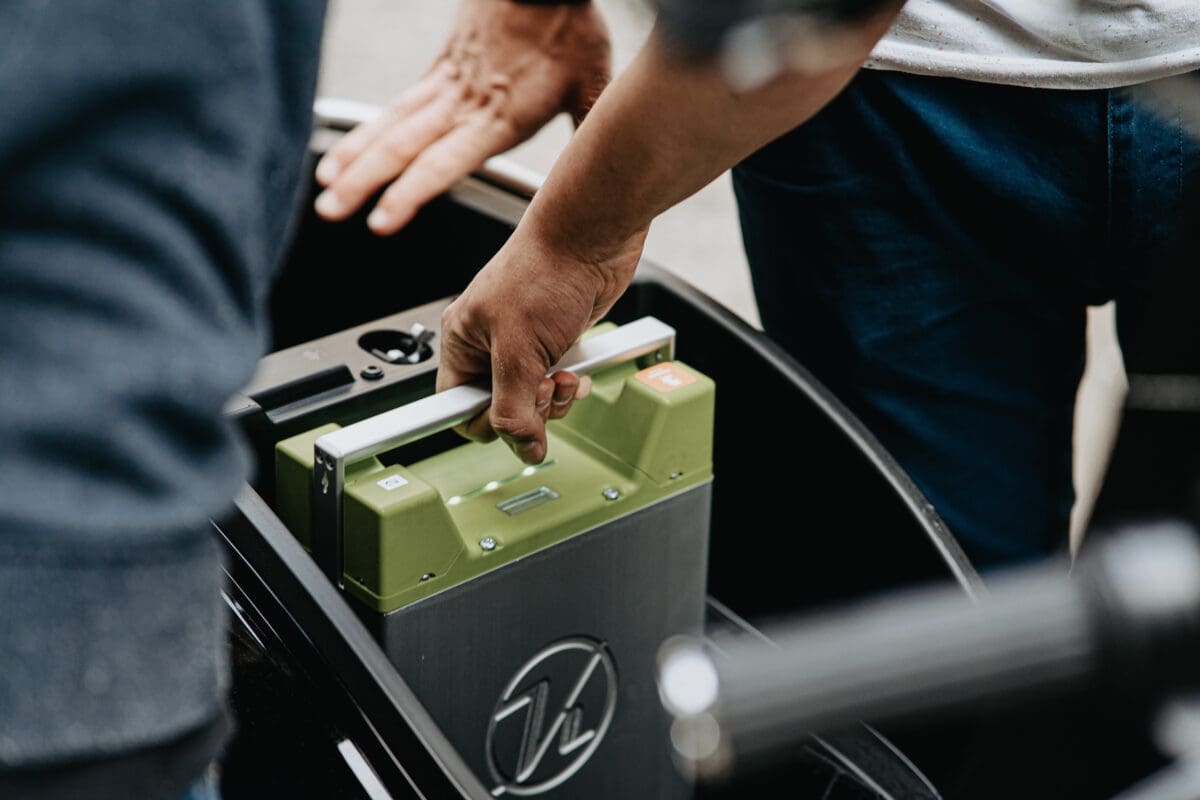When you think of all-electric vehicles (EVs), what is the first thing that comes to mind?
Do you think of energy independence, soaring gas prices, luxury cars, or a futuristic world? Well, EVs are very much a current reality with pricing coming back down to earth.
Are Electric Vehicles Worth It?
Price Tag and Body Types
In total, there are 34 EVs that have been or will be released this year. A far cry from the 2008 Tesla Roadster, this year’s EVs include everything from compact cars, full-size sedans, and SUVs, to pickup trucks, luxury cars, and even a cargo van! Prices start at $27,400 for the Nissan LEAF and others can be bought for the price of a typical crossover or SUV–maybe even less when you factor in federal and state incentives.
EV prices are falling with increasing popularity–nearly 1 million were registered in the United States in 2021. What started as a trend to become environmentally-friendly is becoming more economically-friendly as gas prices soar and EVs become 2-3 times cheaper to drive than their gas-powered counterparts.
If you’re trying to choose the best option for your lifestyle, the Department of Energy (DoE) has a tool that compares up to four electric- and gas-powered vehicles side-by-side, calculating both fuel economy and estimating the annual fuel costs.
Incentives and Rebates
All-electric and plug-in hybrid vehicles purchased in or after 2010 are eligible for the federal Plug In Electric Vehicle Credit. Depending on the capacity of the battery, this credit ranges from $2,500 to $7,500. It’s important to note that this is only for purchased or leased new vehicles (not pre-owned) and is sometimes taken into account at the dealership, factoring into your monthly payment.
There are also a variety of local incentives, depending on where you live in North Carolina and your utility provider.

Driving Range & Charging
It is true that the driving range of EVs are shorter than those powered by gasoline. However, technology for EVs is rapidly improving and will likely soon rival or overtake driving ranges of gas-powered vehicles. In the meantime, the largest challenge with EV charging will be getting accustomed to when a vehicle should be charged. While the fastest charger can fully charge a vehicle in 30 minutes, you won’t be able to “forget to go to the pump” until you’re on your way to work in the morning. Rather, charging your vehicle in your garage will become the norm–especially with electricity prices the lowest at night. Think of it like plugging your phone into its charger when you go to bed at night: if you need to plug it in during the day you can, but it’s most convenient when you’re home.
On average, the electricity to drive an EV costs 43.5% of the cost of fuel for a comparable gas-powered vehicle. However, the exact cost to charge an EV is dependent on the following factors:
- Price of electricity
- The type of charger (slow or fast charging)
- The cost of installing the home charger
- The type of vehicle
- Number of miles driven
Public EV chargers can range from free to a small fee, and are becoming increasingly popular with President Biden’s reform to hasten the country to a carbon-neutral status.
There are three types of EV charging stations
- Level 1 ‘At Home’ Chargers: Most models include a standard 110-volt charging unit that plugs into an electrical outlet with a three-prong plug. This is the slowest form of charging, taking 8-24 hours for a full charge, depending on the type of vehicle.
- Level 2 Chargers: The most common public chargers and also available for home use with an additional charging unit. At 240 volts, vehicles can be fully charged in as few as 4 hours. Public chargers vary by charging per minute or per kWh, and can be set up to pay-as-you-go or via a charge account.
- Level 3/DC Fast Chargers: Less common 440-volt public chargers can charge a vehicle up to 80% within 30-60 minutes. They are also the most costly, though some vehicle manufacturers have exclusive charging stations at little to no cost for their own vehicles.
Level 2 home chargers installed by Cape Fear Solar Systems can vary from $650-$2,375, depending on the product, and most consumers pair it with solar panels to offset the cost of charging their EV. Level 3’s are not available for home use.
If you go on a road trip, it’s important to note where EV charging stations are and how long it will take to recharge. No one wants to run out of battery in the middle of nowhere. There are numerous maps of EV charging stations–all with different features and ways to filter what information you’re looking for. The one below even lets you map out a route to make sure you’re always within range of a charging station.
(If the above widget is having trouble loading, you can also pull it up here).
What are the Maintenance Requirements of Electric Vehicles?
With fewer moving parts under the EV hoods, maintenance costs as also significantly less. EVs don’t need oil changed, air filters replaced, or new spark plugs put in, but brakes, tires, and other wear-and-tear components not contributed with an internal combustion engine will still need servicing. According to a study by AAA, EVs cost 25.8% less to maintain annually when compared to their gas-powered counterparts.
The biggest hurdle when looking at the maintenance costs of an EV will be finding someone to service it when a problem does indeed arise. Troubleshooting problems with an EV are going to be different than a gas-powered vehicle and most service technicians aren’t used to working on something without an internal combustion engine. EVs require special training and safety requirements, and, without the demand for EV technicians, most have yet to make the switch. Those that have most likely work at the service centers of major dealerships, putting independent auto shops in a tight spot.
As demand for EVs grow, the number of automotive technicians capable of servicing them will too; growing pains are always the hardest.

How Long is the Lifespan of Electric Vehicles?
Much like your smartphone or laptop, the battery in EVs will ultimately die. Most manufacturers warranty batteries for 5-8 years with extended warranty programs available. While initial assessments anticipated EV batteries to last for 10 years, one study by the National Renewable Energy Laboratory (NREL) predicts their lifespan to range 12-15 years in moderate climates and 8-12 years in extreme climates. In comparison, people keep their vehicles an average of 11.9 years, with an average age of 12.1 years. New vehicles are typically kept for about 6 years, as owners want to stay current with the latest features.
EV technology is still relatively new and not enough vehicles have concluded their lifespan (average age being 3.9 years old) for exact predictions or for many manufacturers to even publish pricing for replacement batteries. As it stands right now, replacement batteries will be the main ticket item when it comes to EV maintenance outside of a warranty. However, global prices for lithium-ion batteries are also dropping as EVs are rising in popularity, with an 89% decrease from 2010-2021 and a 6% decrease in 2020-2021 alone (despite the automotive microchip shortage).

What are the Environmental Impacts of Electric Vehicles?
Recycling and Upcycling Retired Batteries
By now, we all are used to our computer and cell phone batteries dying once they reach the end of their lifespan. Because they are so small, there hasn’t been too much focus on what happens to them once they are no longer providing us power. When it comes to EV batteries, because the size and quantity are so much greater–there has become an increased concern about them ending up in landfills.
Around the world, vehicle manufacturers are working to create a closed-loop recycling program where retired EV batteries can be repurposed to power factories, homes, and businesses for about 10 years. Chinese legislation makes automakers responsible for expired batteries and the European Union has its own regulations. Nissan LEAF batteries will find a new home providing backup power to the Amsterdam ArenA, a word-famous entertainment venue and home to the Ajax Football Club. Retired Toyota Prius batteries will become part of Japanese 7-Eleven store photovoltaic systems to power coolers, grills, and food warmers. And Volkswagen Group is starting a recycling plant in Braunschweig, Germany.

In the United States, spurred by the December 2021 executive order of federal carbon-neutral milestones for the next few decades, the DoE has been extensively funding research into recycling and repurposing lithium-ion EV batteries. One such program, started in 2019, is a multi-year competition funded by the DoE and executed by NREL. According to their website, the Lithium-Ion Battery Recycling Prize is “a $5.5-million phased prize competition designed to incentivize American entrepreneurs to develop and demonstrate processes that, when scaled, have the potential to profitably capture 90% of all discarded or spent lithium-based batteries in the United States for eventual recovery of key materials for re-introduction into the U.S. supply chain.” At the time of this article’s publication, the competition is currently in Phase 3, where competitors must turn their proof-of-prototypes into refined pilots of the technology. It’ll be interesting to see the winning entries and watch as they help establish national EV recycling programs.
Additionally, the DoE’s Argonne National Lab’s Recell Center is partnering with academic institutions and companies to develop new ways to recycle EV battery materials. Most recently in the news, was one startup funded by this program, Ascend Elements. Their patented method of upcycling lithium-ion batteries “recovers almost 100% of the metals and produces no toxic waste” with “93% lower carbon emissions [and] at about half the cost of newly mined metals.” After shredding and sieving thousands of pounds of lithium-ion batteries from a variety of sources, the process called ‘Hydro-to-Cathode’ adjusts the ‘black mass’ mixture, atom-by-atom, and produces a battery cathode that “can be customized to an EV manufacturer’s specific needs.” While public opinion generally holds recycled materials as subpar, these upcycled batteries have been found to have at least a 30% longer lifespan and charge 2-3 times faster than the original batteries. Findings from Hydro-to-Cathode were published “in the peer-reviewed science journal Joule and independently verified in other labs.” In 2021, Ascend Elements (at the time known as Battery Resources) announced an agreement with Honda to recycle Honda and Acura EV batteries, incorporating their closed-loop recycling process into Honda’s material supply chain.
If Hydro-to-Cathode becomes the standard or even the predecessor to other lithium-ion upcycling processes, spent lithium-ion batteries would not be toxic hazards in landfills and our EV battery supply chain could shift to become American-based. Materials for new batteries, on the other hand, must first be extracted from mines in Australia, South America, and the Democratic Republic of the Congo–presenting environmental and human rights problems–before being processed in China and shipped to factories worldwide.
Greenhouse Gas Emissions
Without internal combustion engines, EVs themselves don’t create air pollution with tailpipe emissions. Any greenhouse gas emissions associated with EVs come from the production process, especially when mining the materials for- and assembling the batteries. However, if battery upcycling programs take off, this too can be drastically reduced.
By 2035, NREL estimates a 22-36% reduction in greenhouse gas emissions, depending on various EV adoption scenarios.




